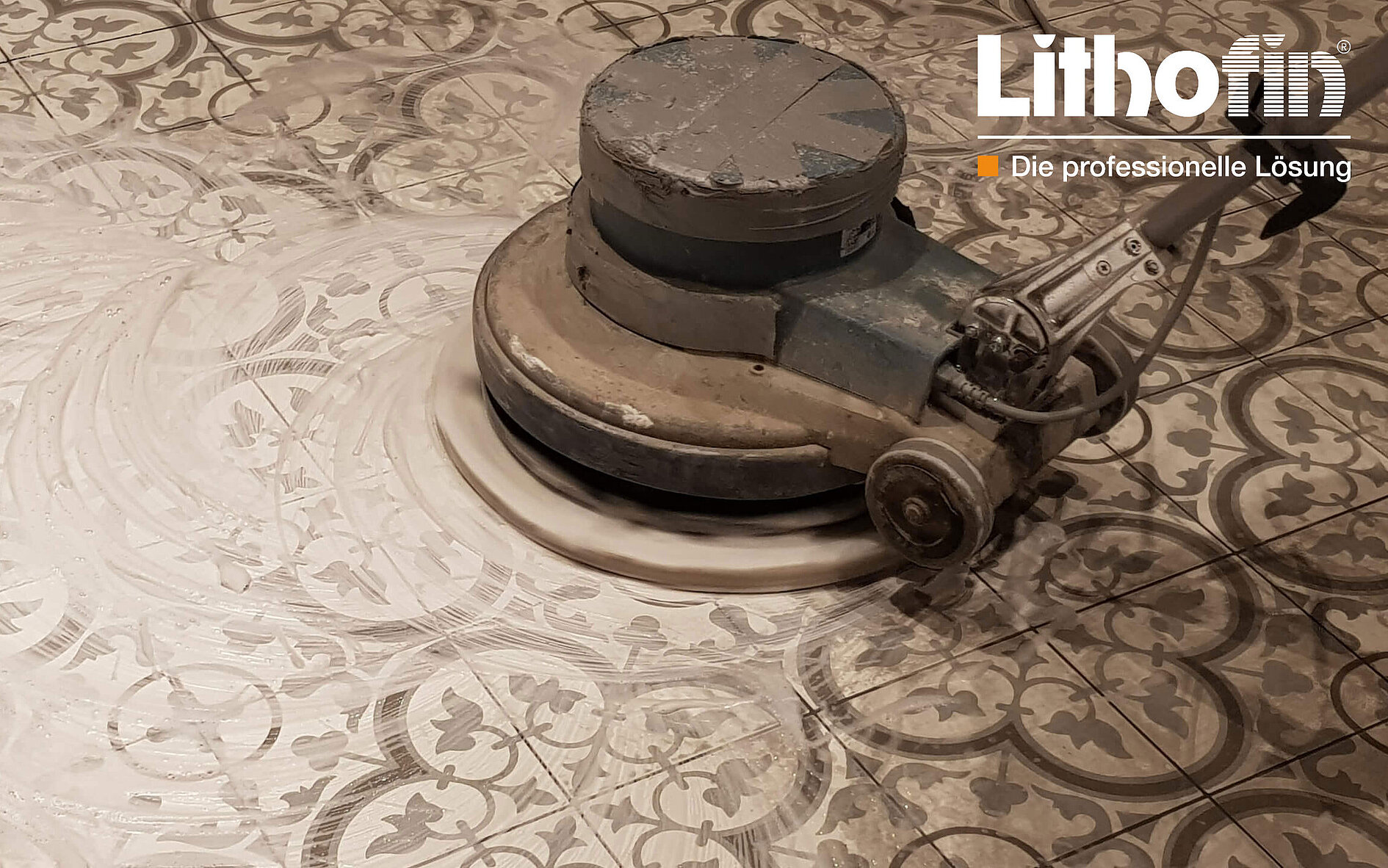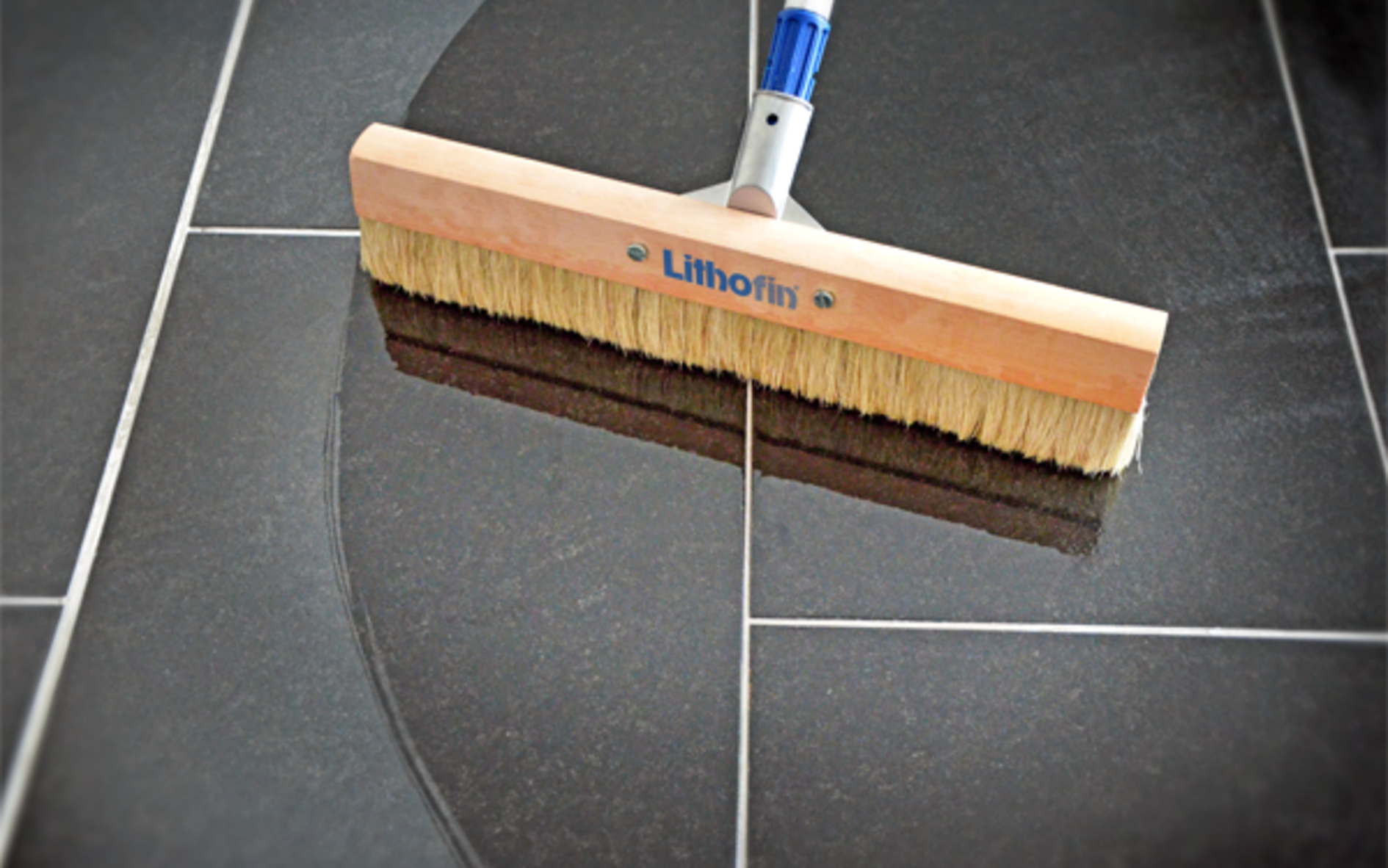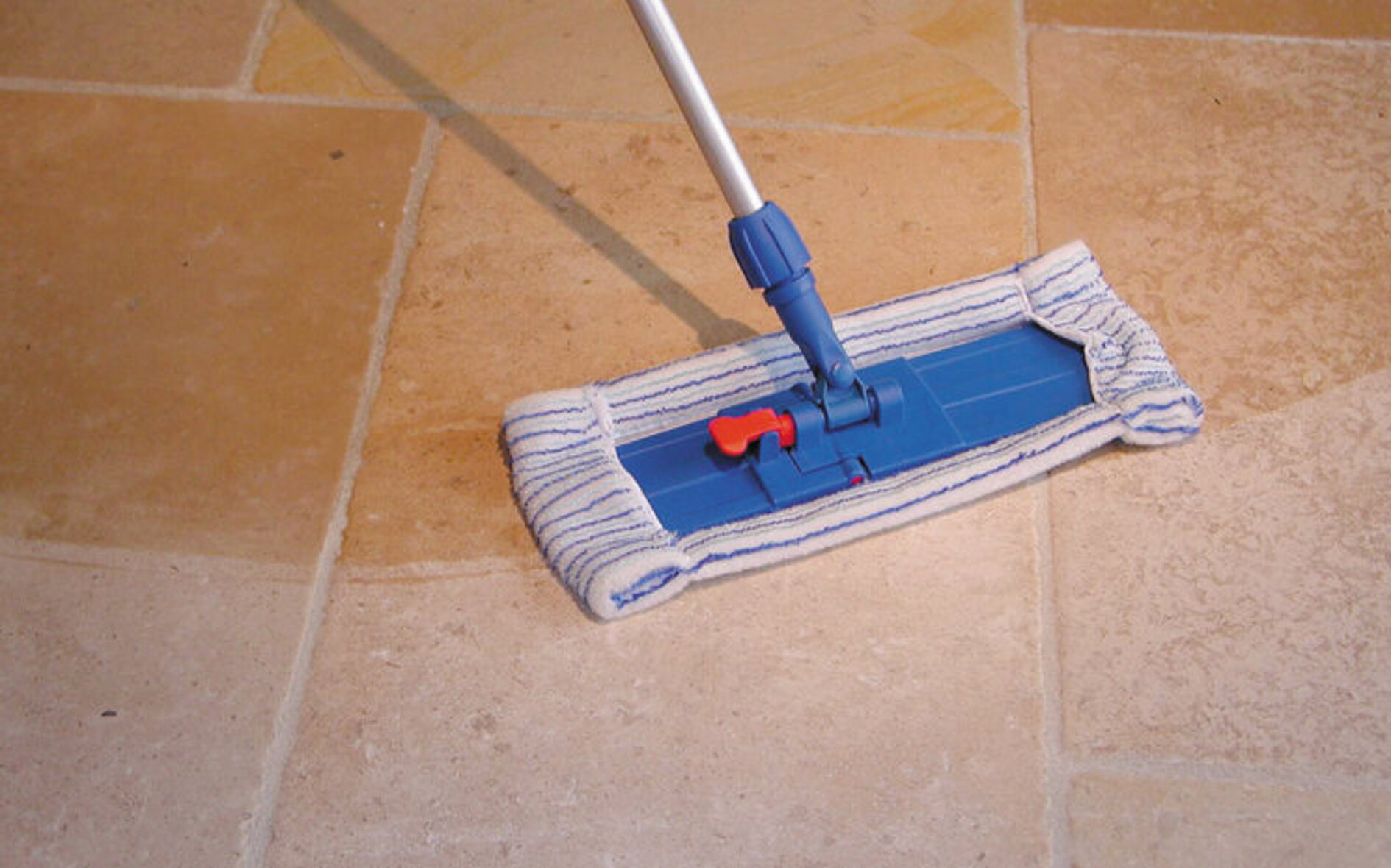Cleaning. Protecting. Maintaining.
Lithofin Stone Care System.
The product range for professional users and discerning end users is extensive. The products for cleaning, protecting and maintaining form a stone care system where three steps build onto each other. The product lines are carefully tuned to the individual properties of ceramic and porcelain tiles, cotto and terracotta, natural stone and artificial stone.
The objective: well maintained surfaces for the long term.
Cleaning.
Final construction cleaning. Basic cleaning. Special cleaning.
Products within the first stage of the stone care system for "Cleaning" are suitable for the final cleaning of buildings and for the removal of special impurities. By completing the cleaning process you can prepare the surface for a protective treatment. There are different types of cleaning processes and therefore we have prepared a short overview for you:
Final construction cleaning.
This is about removing contamination from new surfaces such as cement film, epoxy resin film and general dirt. With final construction cleaning, you are preparing the surface for a professional handover as the installer/fitter.
Basic cleaning.
Basic cleaning refers to the cleaning of floor surfaces that have already been laid. Old floor surfaces are often subject to a combination of deep grease contamination, surface dirt and layers of care products that need to be removed.
Special cleaning.
Special cleaning is used to remove specific dirt and/or stains such as efflorescence, oil and grease stains, cement deposits, and others.

Protecting.
Impregnator. Colour Enhancer. Sealer.
Products within the second stage "Protecting" contains all products for impregnation, colour depth and sealing. A protective treatment makes the surface easier to clean and less sensitive to stains. In addition, the flooring/surface is protected against moisture penetration and at the same time its properties for use are improved. A distinction can be made between protective treatments:
Impregnator
During the impregnating process, the impregnating sealants penetrate the surface and accumulate within the capillary walls. Impregnating products build up a water and/or oil repellence depending on the individual product ingredients/compounds. The repellent effect results from the reduction of the capillary absorbency. A basic requirement for the suitability of the impregnating sealant is that the surface must be absorbent/porous. Impregnating sealants are also suitable for use on absorbent surfaces as a grouting aid.
Colour Enhancer
Colour enhancing improves the appearance by deepening the colour and/or giving it a shine. The colour deepening is greater with solvent-based products as the active ingredients are used in their original structure. The depth of absorption depends on the pore radius and the molecule size. Water-based systems provide less colour change because the active substances are less soluble in water and therefore have to be modified accordingly. Water-based impregnators are generally easier to use.
Surface Sealer
Surface sealants are characterized by creating a covering film on the surface. They are relatively easy to recognise by the changed sheen/gloss behaviour of the surface. Different degrees of gloss can be achieved by the variable selection of active agents within the products. All these surface sealants and finishes close the surface pores and this reduces or eliminates the original water vapour permeability. Therefore, external application is not recommended.

Maintaining.
Regular cleaning. Care.
Products of the third stage of the stone care system are used for regular maintenance cleaning and are summarised under the collective term "Maintaining".
Regular cleaning
Regular maintenance care with suitable care products is essential for the appearance and maintenance of tiles and natural stones. The care should remove dirt and at the same time give the flooring a well-groomed appearance. The measures must be adapted to the local conditions, the flooring structure and material properties.

